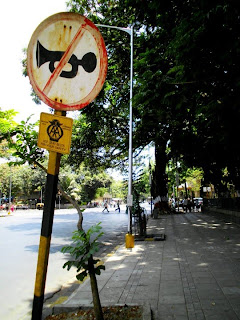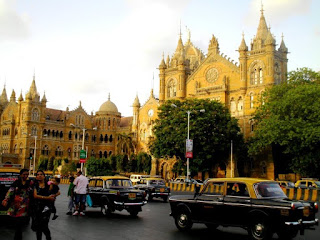India. A complicated, in-your-face, non-stop action sequence capable of hypnotizing and blinding any visitor with its Technicolor ferociousness. Or so they say. Perhaps this nation lives up to its reputation in some aspects, but it’s also quite possible that the mere tourist whose priority is to get to the front of the line at the Taj Mahal or perfect the scorpion pose at the hippest of yoga institutes overlooks the fact that this is a nation of layers, incapable of being described in a few words. In fact, in all of my travels, I have never been to a place so complex and unique as India. Of course, each of us who has been fortunate enough to travel to this fascinating nation will see it through different eyes; thus, upon our departure (for those who don’t end up staying forever), we each take home a different India in our hearts. As I blog about my travels, I hope I can convey my own India and its fascinating culture, though it must be understood that words cannot always do an experience justice.
So, of all the cultural components of India, which should be written about first? Perhaps it will be easiest to start with the fundamentals. Seeing as India is the 7th largest country in land area, transportation plays an important role for the traveler eager to see various regions of the nation. There are countless ways to get from point A to point B, as is in most countries. What makes India different you ask? It’s the 2nd largest country in terms of population; therefore, it makes getting around a cultural experience in itself.
My first impressions of transportation in India were similar to those in other Asian countries: apprehensive. As my driver picked me up at the Vasco de Gama airport in Goa, I learned quickly that there are not really traffic rules in India, or at least not ones that are regularly enforced. It’s all organized madness with one thing to remember: yield to the bigger vehicle. Motorbikes give way to rickshaws, rickshaws to cars, and cars to buses. Yet all vehicles must surrender to the most significant traffic obstacle: the holy, revered cow. These animals, seen all over India, are quite aware of the fact that they own the roads and no doubt find pleasure in stopping the already chaotic flow of traffic. You can almost see the delight in their faces as they cast an arrogant glance at the impatient driver as they slowly cross the streets.
There is also a consistent honking on the streets of India that one grows accustomed to quite quickly. So much so that when I was picnicking in the mountains in the northern part of India after having spent a month in the urban areas, I found the unusual silence of the countryside to be deafening. Honking is not simply an outlet of road rage in these parts; instead, it’s driving etiquette, a means of a heads up to a fellow driver or a hello to a pedestrian. Circus-like trucks are painted in bright colors and almost all of them have the request “Horn Please” stretched across their rears. Sure, all of this contributes sound pollution to an already contaminated environment, but I’m not sure the institution of transportation would not function without the constant honnnnnnnnnnks.
It’s doubtful that anyone follows this “No Honking” sign in Mumbai; there are, similar signs encouraging honking in areas of sharp curves or blindspots on the road.
In cities like Mumbai and Delhi, rickshaws are a cheap way to get around, as are taxis. You can pay extra to ride in a taxi with air conditioning, but I much prefer the old fashioned ones, giving the passenger a sense that he or she has traveled back in time to the era in which the British ruled. Motorbikes are no doubt the most fun, as I learned after a late night drive around Mumbai with a new found friend/ Indian tour guide. They can be quite dangerous, however, and only the driver is required to wear a helmet. I asked my friend if this was enforced. If caught by a policeman without one, 100 rupees can be paid on the spot and all is forgotten. “You know… this is India,” he exclaimed. Since then, I’ve heard this as the explanation for most of the corruption or general problems in this country.
Old-fashioned taxis pass in front of Victoria Terminus, Mumbai.
I’ve learned how to pinch my rupees by always considering the most cost efficient way of getting around, if time allows for it. My volunteer job in McCleod Ganj requires that I sometimes travel to Dharamsala, a 40 minute ride down the mountain. Rather than paying $5 for a taxi (or more if the driver feels like taking advantage of the fact that I’m a tourist), I hop into a shared jeep for 10 rupees (about 20 cents). This also provides a source of entertainment, as the driver sees how many people he can pack into an 8 passenger vehicle. On my latest ride, 13 of us managed to squeeze in, with grown men sitting on each others’ laps and an older monk practically hanging out of the window. Personal space has little significance in Indian culture, unlike our need for an individual bubble in the West.
This could not be more evident than on an Indian train. In Mumbai, I became extremely ill from what I would later learn as E.Coli poisoning, but managed to make it through the 23 hour trip to Agra. Fortunately, Melissa, my travel mate, and I booked an air conditioned sleeper which proved to be quite clean and comfortable, despite the rancid smell of the bathroom and the passing tea vendors’ shouts, “Chai, chai, chai!” each moment we were about to fall asleep. We also attracted the attention of a group of curious Indian children, who, halfway through the trip, felt it perfectly normal to crawl on top of me, pinch my cheeks, and even play with my hair. Affection amongst strangers is customary here, which I find unusual and endearing at the same time.
Me on my deathbed and curious Indian children on me on the overnight train to Agra.
Buses are also heaving with passengers, and not only on the interior. If one is catching a bus during rush hour, there’s a good chance he or she will be hanging onto the side of the bus or in some areas, sitting on top of the bus. Buses can also be quite unreliable, as was the case when I was taking an overnight trip to Dharamsala. We had stopped for a bathroom break and just as everyone was starting to board, the familiar noise of a reluctant automotive ignition sounded from the front of the bus. It only took a few short moments for the male passengers to exit the bus and assist in giving it a push start until the driver was able to successfully start the engine again.
Passengers push our stalled bus at a rest stop somewhere on the way from Delhi to Dharamsala. (Thanks to Philippa for the photo.)
My favorite travel moment, though, was on a train from Agra to Faridabad, a city just south of Delhi. I was quite frantic as even booking a train ticket can be reasonably confusing. In these situations, I found that befriending an Indian was the best way to ensure I got to my destination. In this case, my new friend not only waited until the train arrived, but also carried my luggage and made room for me to sit. When denied access to my proper car, as I had heard is usually the case, we found our way to the lower class sleeper section, my only option for arriving on time. This was quite different than what I had experienced on my nice first class ride from Mumbai. People were stacked upon each other, or sitting shoulder to shoulder hunched over due to the lack of head space of the three-tiered bunks. Vendors walked over reclining bodies selling their goods and the odors of humanity permeated throughout the car. A dirty foot hung in my face for three hours.
In normal cases, this would seem like a prison sentence; yet, I relished in the fact that I was getting a true Indian experience. Only a short time into the ride, a few of the passengers (all Indians) began asking me questions about my home, and I questions about theirs. They were in awe as I showed them pictures of my family and friends on my iPod. After an hour, more people had squeezed into the car, curious as to what was going on with the strange foreigner. I had one admirer with very limited English trying to propose to me. This, as you can imagine, had the audience of about 20 people now in cahoots. I, too, was thoroughly enjoying the human interaction taking place. When I arrived at my stop, a few of my new friends carried my luggage off the train, wished me well, and pointed me in the direction of the station’s exit. “Will you pleeeese marry meeee?” I heard someone yell as the train took off again.
In a seemingly dog-eat-dog India, where everyone is said to be out for himself or herself, there are small moments that this stereotype proves to be not completely true. In the chaos of the streets, in the infinite honking, in the conversation between strangers, humanity can be recognized. Transportation in India is not only a way to get around, but also a fun adventure, an outlet of interaction with the warm people who live here, and no doubt an elemental facet of the nation’s culture




